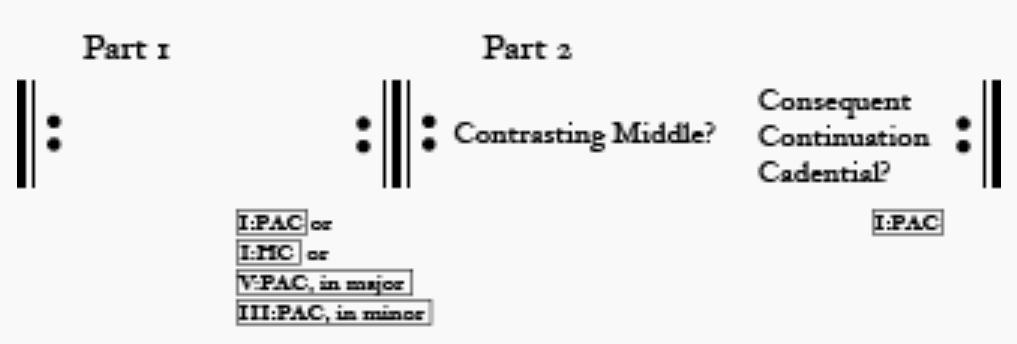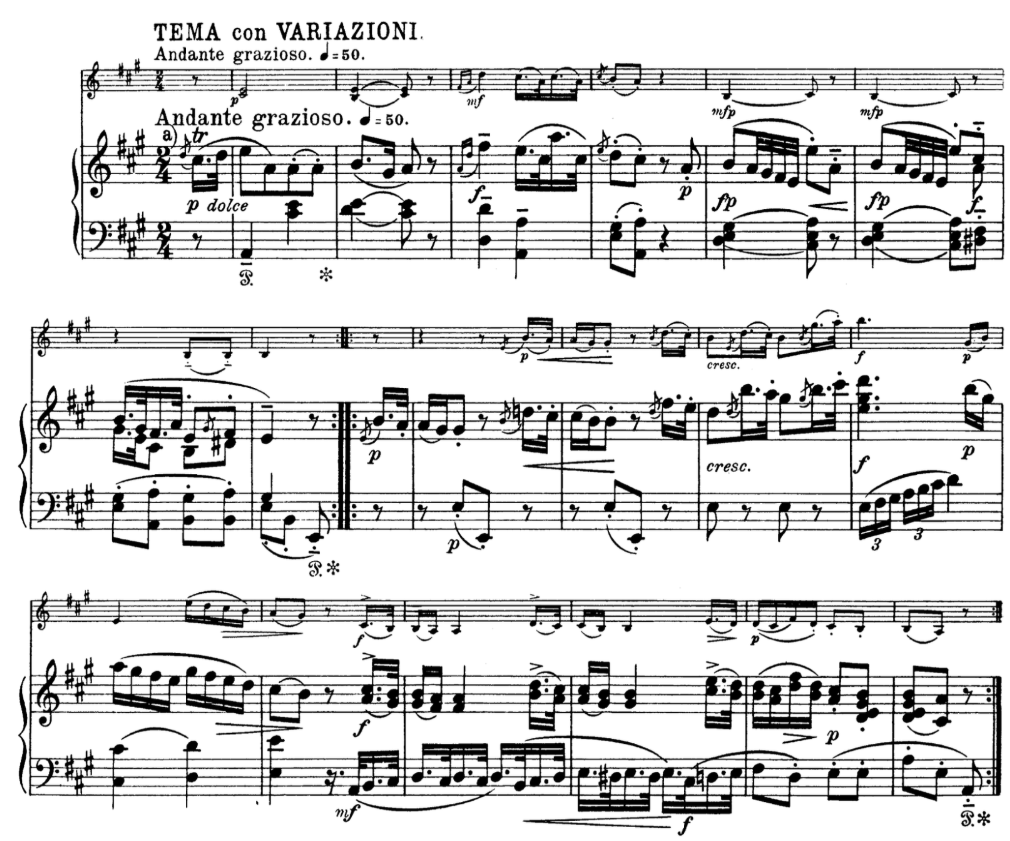4.7: Classical Theme Types - The Small Binary
- Page ID
- 62092
The small binary often fulfills a structural role similar to that as the small ternary. It can be the main theme of any of the full-movement forms, but is most often found as the theme of a theme and variations, rondo, or the minuet and trio.
Small binaries have two parts, each of which is usually repeated. Unlike the “rounded binary,” small binaries do not include a recapitulation of the material heard in the first part.

THE SMALL BINARY
###First part Typically constructed as tight-knit period, sentence, or hybrid, the first part ends with cadential articulation in the home key or a closely related one. Because a small binary is often smaller than that of the small ternary, it is not uncommon to find a I:HC at the close of the first part.
###Second part The second part of a small binary quite often begins like a contrasting middle. The material that follows the contrasting middle, however, is not a recapitulation. If it were, the theme would be a small ternary. Rather, this material takes on a variety of guises. Often, it resembles one of the common “after-phrases”–continuation, consequent, or cadential. In the classical style, the second part of a small binary will always close with a I:PAC.
###An example

MOZART, VIOLIN SONATA IN A MAJOR, K. 305
In this small binary, the first part is created by a simple period that modulates to and closes in the dominant key with a V:PAC. A contrasting middle follows, where we see a typical “standing on the dominant” to support a prolongation of V7. Notice that the motivic material in the contrasting middle is quite similar to the motivic material we hear in the first part. This is typical of a small binary, whose second part does not contrast with the first part to such a high degree as in the small ternary. Following the contrasting middle, the final four measures of this example resemble a continuation: the melodic motive we hear in the contrasting material is fragmented and sequenced, and begins, with the pickup to the penultimate measure, a cadence.


